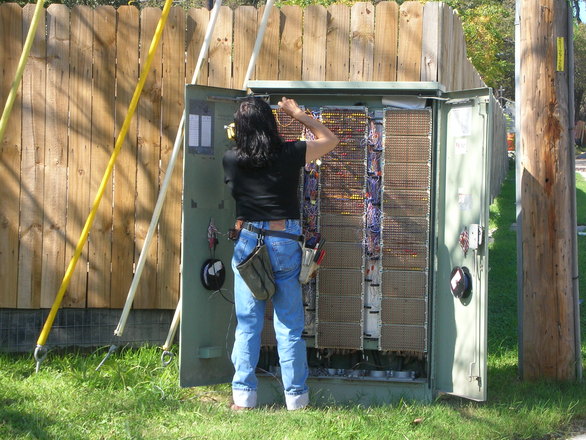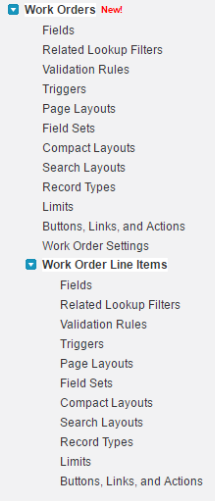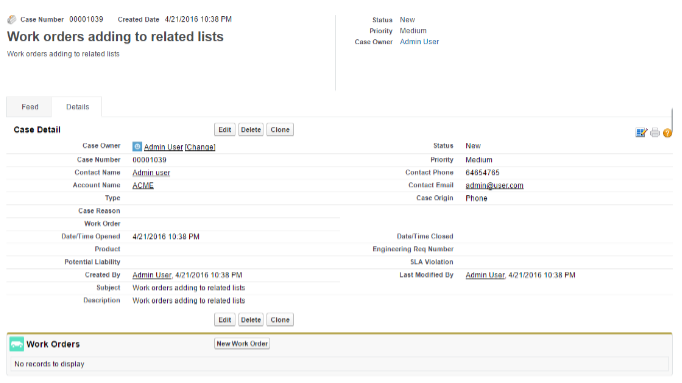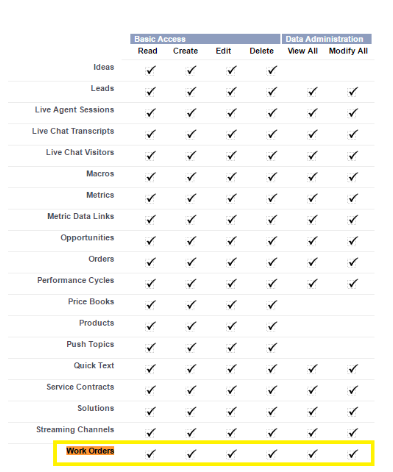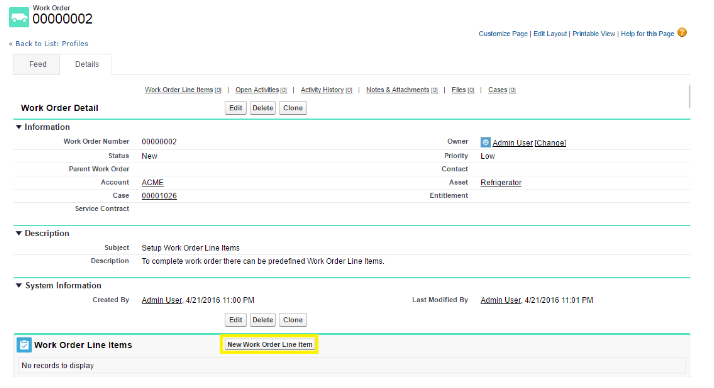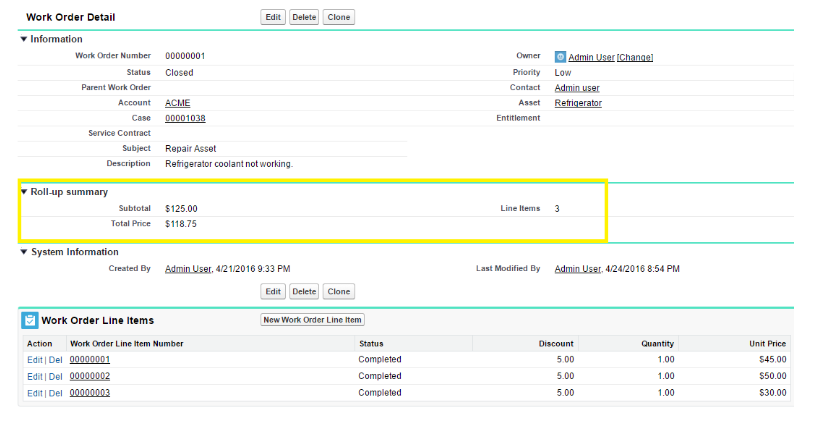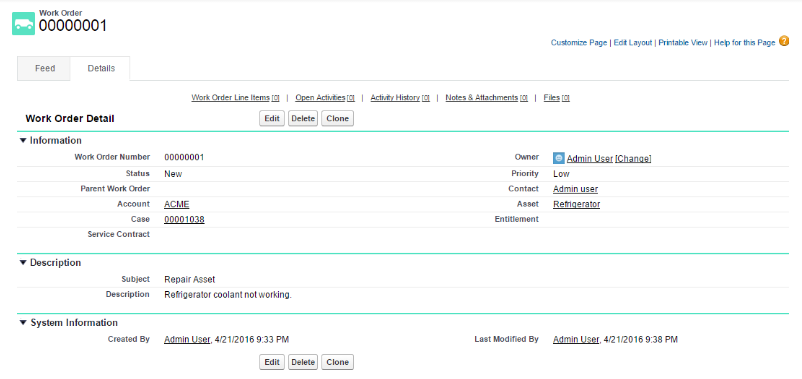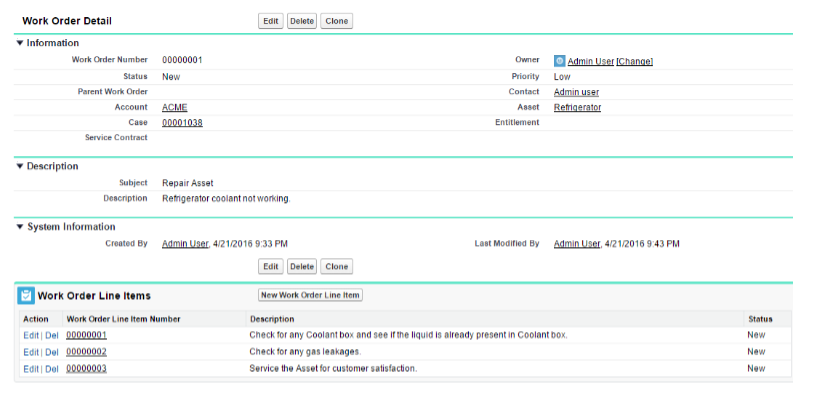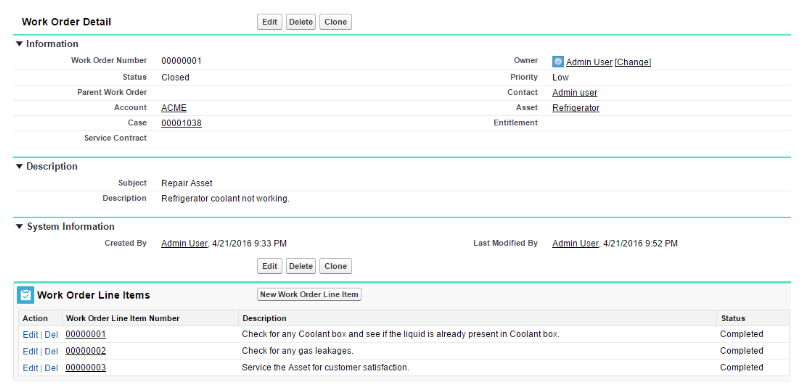If you have had a requirement to track field service in Salesforce, up until recently, you had two options: create a custom solution, or implement an AppExchange solution such as ServiceMax. Now, with the recent Spring’16 release, Salesforce have added the beginnings of a field service solution.
The initial functionality is centered around Work Orders. Work Orders is the central object used to track repairs, perform maintenance activities and other types of service requests that require an on site visit. Work Orders and Work Order Items represent a task or series of tasks that are to be performed and related to an installed Asset. They can also be associated with Accounts, Cases, Contacts, Entitlements, Service Contracts and other Work Orders. Also custom relationships can be created with other custom or standard salesforce objects. With the Spring’16 Release Work Orders are available in all Salesforce Org and does not require any extra licensing.
Once Work Orders has been enabled for the Org, the details like fields, page layouts, validation rules, triggers and other components are available just like any other Salesforce standard object. Work Order Line Items provide specific tasks that are required to be performed in order to complete a Work Order. There can be multiple Line Items for Work Orders and they can be completed one by one.
Viewing Work Orders
Work Orders can be associated with Accounts, Assets, Cases, Contacts, Entitlements, Service Contracts and other Work Orders. Apart from these standard objects, they can also be associated with custom objects. In order to associate Work Orders with standard or custom objects, the corresponding lookup field needs to be setup in the custom object and the related list needs to be added to the page layout.
Creating Work Orders
Work Orders can be created by going to the “Work Orders” tab which would already be available in the tabs section for the organization. In order to be able to view the tab and create Work orders, “Read”, “Create”, “Edit”, “Delete” permissions would be required on the user profile.
If the Work Orders tab has been set on the Console App then it can directly be accessed from the console as well. Similarly for “Work Order Line Items” also all the same permissions would be required in order to be able to create one. Just like any other object there are already standard fields available for the Work Orders Object and custom fields can be created and set on the page layout.
Creating Work Order Line Items
“Work Order Line Items” are an essential part of the Work Order, they are step by step tasks that are part of completing a Work Order. By default the Work order Line Items related list is already available on the Work Orders page layout and a Line Item can be created directly from there.
In-Built RollUp Summaries
The Work Order object has 3 default roll-up summaries, which are:
- Subtotal (SUM Work Order Line Item)
- Total Price (SUM Work Order Line Item)
- Line Items (COUNT Work Order Line Item)
These roll up summaries are based on the Work Order Line Items object, rolling up the fields unit price, quantity and discount.
Let us consider an example of Refrigerator needing service. A work order was created with the Work Order Line Items to represent the work required. One of the Line Items represents the servicing the Asset for which the Unit price was set as $30 and quantity 1. A discount of 5% was granted to the customer. The Sub-total field, which is a standard field, is calculated on the basis of unit price multiplied by quantity. Similarly there is a Total price standard field which is calculated on the basis of Subtotal with the discount applied.
Using these fields the values of the roll-up summary fields are populated. For the Subtotal Roll Up summary field, it will be calculated on the basis of the sum of all the “Subtotal” fields in the Work Order Line Items for the Work Order. Similarly for the “Total Price” roll-up summary field, it will be a sum of all the “total price” fields of the Work Order Line Items under a Work Order. Also there is one more roll up summary field that provides a count for the no of Work Order Line Items available under the Work Order.
Incorporating Work Orders in the Support Process
There are several ways in which Work orders can be incorporated to your support process, here is an example. A customer has called, reporting that the refrigerator that was purchased only a few months ago, is not working at all. Here are the steps that could be followed to address this situation.
1. The agent creates a case for the customer to record the call and tries to troubleshoot over the phone. This was not successful so a field technician will need to visit the customer. The agent then creates a Work Order related to the case and adds the details from the case.
2. The agent can create the work order Line Items that are part of a standard service call, including the service call fee, labor and parts. The agent assigns the work order to the appropriate technician.
3. A technician is sent to repair the Asset. He can view and edit the work orders assigned on his phone using the Salesforce1 App. He works through the Work Order Line Items and starts performing the tasks. He marks them complete once they are complete by changing the status for the specific Work Order Line Item.
4. Once all the “Work Order Line Items” are completed the Work Order is closed by the technician.
5. Finally, as the Work Order is closed the corresponding Case associated with the Asset is closed by the agent and the agent can check any additional information the technician has added to the work order that described the work done, for future reference.
Have you already started using “Work Orders” and incorporating it within your Support Process?
What Certification are you studying for now?
Focus on Force currently provides practice exams and study guides for sixteen certifications

